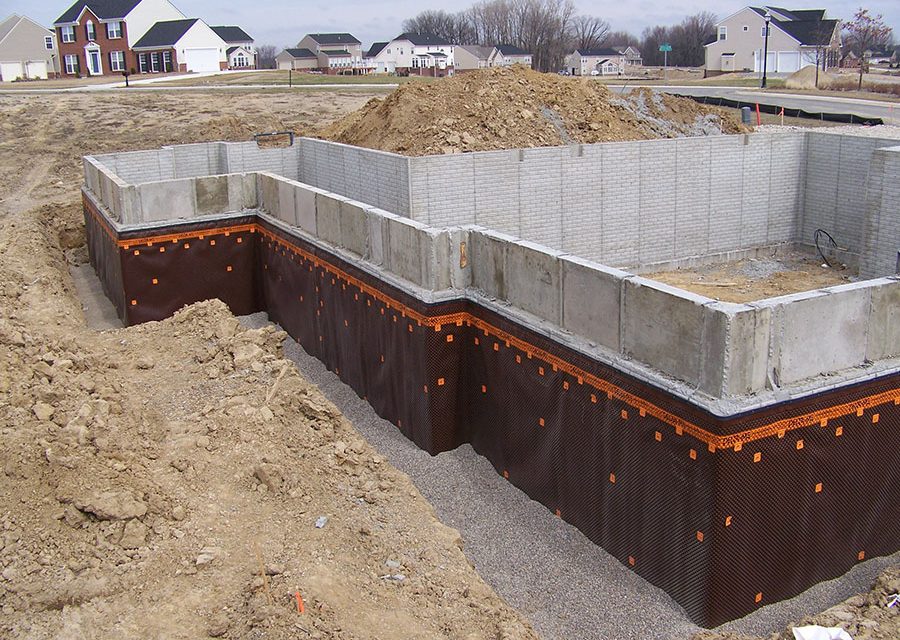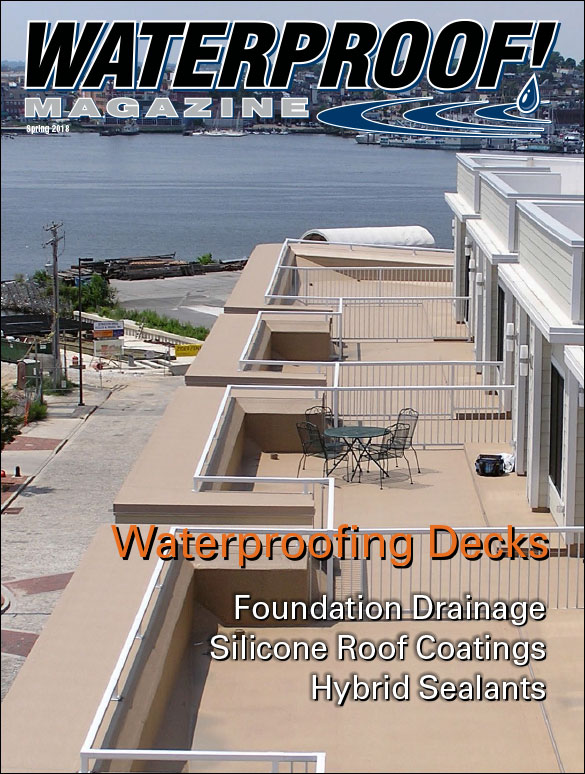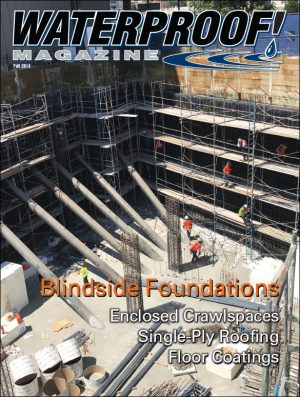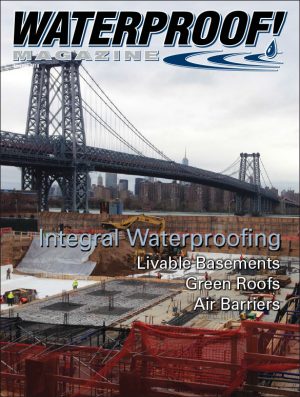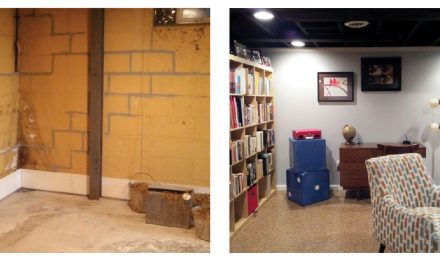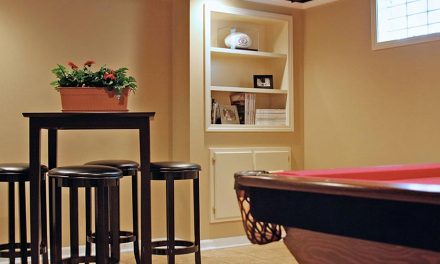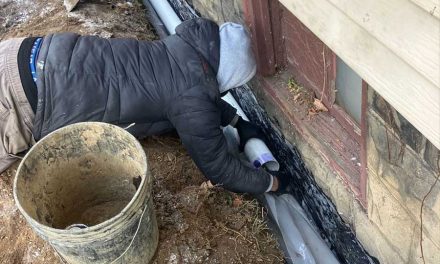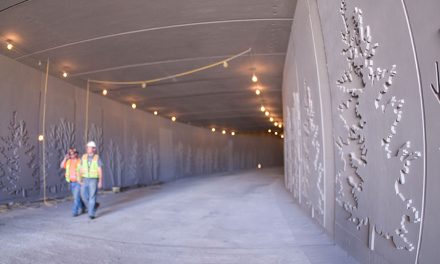Waterproofing membranes are a critical component for keeping basements dry, but they’re only half the solution. In most areas of the country, a drainage system is needed to relieve hydrostatic pressure and extend the life of the membrane.
A foundation drainage system has three major components: a drainage board or membrane to give moisture an easy path down to the footings, a footing drain that collects that water and directs it to a sump pit, and the pump itself that removes the water to an exterior French drain, or stormwater collection system. Sometimes, with sloping lots, gravity is enough to pull water from the footing drains to daylight.
Sean Bahr, engineering technologist at DMX Plastics explains, “The vast majority of residential foundations are damp-proofed with spray tar. Tar breaks down in a short period of time when it comes into contact with alkalines found in the soil, and hydrostatic pressure and movement in the soil cause the dried tar to flake off the concrete foundation leaving it exposed to the permeation of water.”
One solution to ensure a long-lasting foundation waterproofing system is to use a dimple drain sheet. Peter Barrett, product and marketing manager at Dörken Systems Inc. says, “Dimple sheets are a watertight foundation protection system that protect from water intrusion as well as providing an efficient and cost-effective drainage plane. This eliminates the need for expensive full-height gravel. In Canada, dimple membranes meet the dual code requirements for dampproofing and drainage.” The U.S. does not have a code requirement for a drainage layer around the foundation, but in areas with soil moisture, it is very beneficial.
Dimple sheets have several distinct advantages over spray-applied products, “Besides not requiring additional drainage or protection courses, dimple sheets are able to span the inevitable cracks that appear in all concrete foundations without any compromising of protection,” says Barrett. “While many fluid applied membranes oxidize, dry out, and crack over time themselves, dimple sheets remain stable for the life of the structure.”
Bahr adds, “Dimpled membranes will last 50 years whereas tar will start to degrade in three to five years depending on the chemicals in the soil.”
There are installation advantages as well. Dimpled membranes can be installed in any weather. Rain or snow does not affect the installation, and they can withstand the abuse of standard backfilling, unlike fluid applied membranes that require an additional protection course.
Dimple membranes do not require investing in expensive spray equipment, and they also do not have the health risks associated with solvent-based products.
Modern energy codes require continuous below-grade insulation. Dimple sheets can be applied either before or after the exterior insulation is installed.
Installation is straightforward. Most dimple membranes are mechanically fastened to the wall. DMX recommends 1 ¼” concrete nails and washers. The spacing of these washers varies from manufacturer, but contractors must follow the installation guidelines pro-vided by their dimple membrane supplier to achieve optimum results. Although the fasteners penetrate the membrane, they don’t interfere with performance, since there is no hydrostatic pressure to force water through the openings.
A plastic molding is placed at the top of the sheet and around window openings to ensure the sheet functions as designed. “Water that gets behind could carry debris that will build up over time, leading to clogged dimples and wet soil against a bare concrete wall,” explains Barrett. “This is why installation details are so critical.”
Best practice at the base of the wall is to run the membrane all the way to the base of the footer, so water is guided directly to the perimeter drain and away from the critical wall/footing cold joint.
“The best way to get a dimple membrane installation that functions without issue for the life of the structure is to pay attention to the details,” he says.
Dimple sheets have a long record of excellent performance, and have been applied to many thousands of basements across North America. While the advantages for the homeowner are clear, there are also a number of advantages for the contractor as well.
This article has already mentioned that for contractors just getting into the business, there’s no need to buy expensive breathing filters and safety equipment associated with solvent-based products. He doesn’t need a large and expensive spray rig that demands upkeep after every job, like cleaning lines and mechanical repair. He needs only a nail gun (or a hammer in a pinch) and maybe a tool belt and a sharp knife.
Bahr says dimple sheets install quickly, too. “An average basement of 130 linear feet installs in about an hour,” he says.
Barrett points out that dimple sheets can be installed in any weather. “Where fluid-applied membranes require temperatures above freezing and dry surfaces, dimple membranes may be applied in rain, snow, or freezing temperatures; as cold as the team is willing to work.” This allows the applicator to extend his working season—later into the winter and earlier in the spring—because dimple sheets are not weather-sensitive. “As long as a concrete foundation can be poured, the contractor can install a dimple membrane,” he says.
Bahr states that his company’s dimple sheet lasts five times longer than tar. “Because the membranes can span cracks that fluid applied membranes cannot, foundations rarely, if ever, leak. This greatly reduces callbacks, eliminates wasted time, profit, and eliminates unhappy customers.”
Most dimple membranes are approved by ICC in the U.S. and CCMC in Canada for stand-alone use in place of tar. Bahr says, “As long as the dimple membrane is approved by these governing bodies it will be accepted in building codes throughout North America for use on residential foundations.”
Obviously, there are other components in a complete drainage system. A fully operating and correctly installed perimeter drain is critical, and —unless the drain runs to daylight—so is a sump pump.
Typically, contractors use 4″ weeping tile with filter sock and about two feet of aggregate to provide the drainage with dimple membranes.
Factory-trained certified applicators provide the confidence, reliability, and trust to ensure materials are properly applied, and buildings are properly protected. “They ensure that a builder can get installations that are consistently done to a high standard and meet the design intent of the material for optimal performance,” Barrett concludes.
Spring 2018 Back Issue
$4.95
Hybrid Sealants for Crack Repair
AVAILABLE AS DIGITAL DOWNLOAD ONLY
Description
Description
Additional Info
Additional information
| Magazine Format | Digital Download Magazine, Print Mailed Magazine |
|---|

